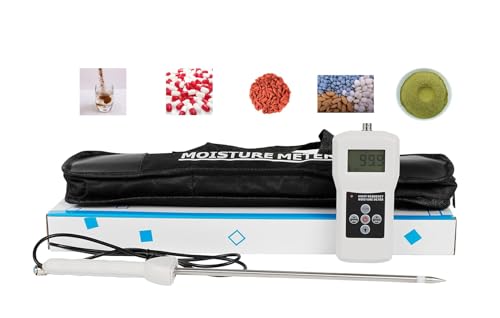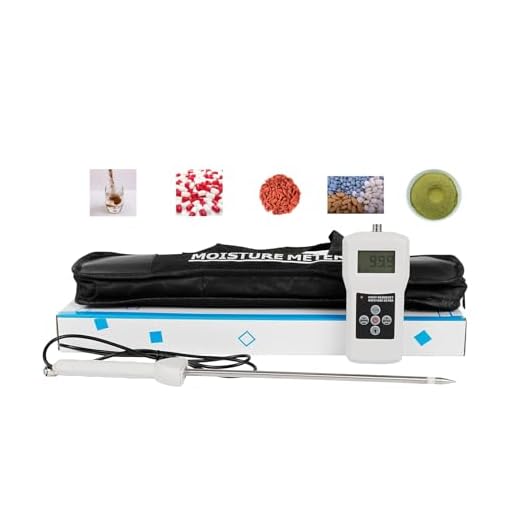




A soil sieve is a simple yet essential tool used in gardening and construction to separate different sizes of particles in the soil. It consists of a mesh screen stretched over a frame, allowing smaller particles to fall through while retaining larger ones on top.
Soil sieves work on the principle of mechanical separation. As the soil is poured onto the sieve, it is shaken or gently agitated to facilitate the separation process. The finer particles, such as silt and clay, pass through the mesh holes, while larger particles like stones and pebbles are retained.
By using a soil sieve, gardeners and landscapers can ensure that the soil they are working with is of the desired consistency. Sieving removes unwanted debris and helps create a uniform soil texture, ensuring optimal plant growth and root development. It also aids in the preparation of soil for various applications, such as mixing soil with compost or creating a smooth surface for laying turf or paving.
Understanding Soil Sieves: A Comprehensive Guide
Soil sieves are an essential tool for gardening and agriculture. They are used to separate different particles, such as stones, debris, and organic matter, from the soil. Understanding how soil sieves work is crucial for obtaining high-quality soil for your plants.
What is a soil sieve?
A soil sieve is a device that consists of a mesh or screen attached to a frame. It is designed to separate coarse materials from fine materials in the soil. The size of the mesh determines the particle size that can pass through it.
How does a soil sieve work?
When using a soil sieve, you place the soil on top of the mesh and shake or agitate it. The larger particles, such as stones and debris, are retained on the top of the mesh, while the finer particles, such as sand and silt, fall through the mesh and collected below. This process helps in removing unwanted materials and obtaining a uniform soil composition.
Choosing the right mesh size:
It is important to choose the right mesh size for your soil sieving needs. The mesh size is usually indicated by the number of wires per inch or by the size of the openings in the mesh. A finer mesh is used when you want to remove smaller particles from the soil, while a coarser mesh is suitable for removing larger debris.
Benefits of using a soil sieve:
1. Improves soil quality: By removing unwanted materials, a soil sieve helps in improving soil quality and texture, making it more suitable for plant growth.
2. Enhances drainage: Soil sieving allows for better drainage by removing excess water-holding particles, preventing waterlogged soil conditions.
3. Enables better root penetration: Sieving helps in creating a more airy soil structure that allows roots to penetrate easily, promoting healthy plant growth.
4. Facilitates nutrient availability: By removing larger debris, a soil sieve ensures that the nutrients present in the soil are easily accessible to the plants.
Conclusion:
Soil sieves are indispensable tools for gardeners and farmers. They help in removing unwanted materials, improving soil quality, and promoting optimal plant growth. By understanding how soil sieves work and choosing the right mesh size, you can ensure a healthy and fertile soil environment for your plants.
The Basics: What Are Soil Sieves?
Soil sieves are a tool used by gardeners, landscapers, and scientists to separate particles of different sizes in soil. They consist of a frame with a mesh or screen at the base, which allows smaller particles to pass through while retaining larger ones.
The main purpose of using soil sieves is to determine the texture, composition, and fertility of soil. By separating soil particles into different sizes, gardeners can analyze the proportions of sand, silt, and clay in the soil. This information is crucial for understanding the soil’s drainage, aeration, and nutrient-holding capacity, which in turn helps determine the best fertilizer or amendment to use.
Soil sieves come in various sizes and mesh options. The size of the mesh determines the smallest particle size that can pass through. This allows for different levels of precision depending on the purpose of the analysis. A larger mesh size will separate larger particles, providing a general idea of the soil composition, while a smaller mesh size will allow for a more detailed analysis.
When using a soil sieve, a sample of soil is placed onto the mesh and shaken or agitated. The size and weight of the particles cause them to settle into layers, with the smallest particles at the bottom and the larger ones towards the top. By carefully scraping off each layer and collecting the particles, gardeners can collect and analyze soil samples of different particle sizes.
The collected soil samples can then be examined under a microscope, sent to a laboratory for further analysis, or used for various other purposes such as creating soil mixes, determining irrigation needs, or assessing soil fertility for gardening or farming purposes.
The Importance of Soil Sieves in Agriculture
In agriculture, soil sieves play a crucial role in assessing the quality and composition of soil. They are used to separate different-sized soil particles, allowing farmers and researchers to understand the soil’s texture, fertility, and potential for crop growth.
Particle Size Analysis: Soil sieves are commonly used for particle size analysis, which helps determine the distribution of soil particles. By sieving soil samples through different mesh sizes, farmers can determine the percentage of different particle sizes, such as sand, silt, and clay. This information is essential for understanding the soil’s characteristics, as well as for making informed decisions on soil management, irrigation, and fertilization.
Soil Fertility Assessment: Soil fertility plays a vital role in determining the potential for crop growth. By sieving soil samples, farmers can assess the nutrient content of the soil. Nutrients like nitrogen, phosphorus, and potassium are crucial for plant growth and development. Soil sieves help farmers evaluate the availability of these nutrients and make necessary adjustments to enhance soil fertility through appropriate fertilization practices.
Soil Texture Determination: Soil texture refers to the relative proportions of sand, silt, and clay in the soil. It has a significant impact on water holding capacity, drainage, and nutrient retention. Soil sieves enable farmers to evaluate the soil texture by sieving soil samples through different mesh sizes and observing the particle distribution. This information helps farmers determine the suitability of soil for different crops and plan appropriate irrigation and drainage systems.
Seedbed Preparation: Soil sieves are also used during seedbed preparation to ensure an ideal environment for seed germination and root growth. Sieving the top layer of soil removes large stones, debris, and clumps, creating a fine and uniform seedbed. This promotes better seed-to-soil contact, enhances oxygen and water penetration, and facilitates root development, leading to improved crop establishment and yield.
Quality Control: Soil sieves are crucial tools for quality control in agriculture. By regularly analyzing soil samples, farmers can monitor changes in soil fertility, texture, and composition. This information allows them to make informed decisions regarding soil management practices, including fertilization, irrigation, and soil amendment strategies.
Overall, soil sieves play a vital role in agriculture by providing valuable insights into soil characteristics, fertility, and composition. They enable farmers to make informed decisions regarding soil management, leading to improved crop productivity and sustainable agricultural practices.
How Soil Sieves Work: Mechanism and Process
Soil sieves are essential tools used in various industries to separate particles of different sizes from soil or other materials. They work based on a simple but effective mechanism that allows for efficient and accurate particle separation.
The basic principle behind soil sieves is the use of a mesh or screen, typically made of stainless steel or brass, with specific hole sizes. The material to be sieved is poured onto the sieve, and the particles are separated based on their size as they pass through the holes in the mesh.
The mechanism of a soil sieve involves two main processes: sifting and sieving. During the sifting process, the material is shaken or agitated, causing the smaller particles to fall through the holes while the larger particles remain on top of the sieve.
The sieving process occurs when the material is passed through the sieve using various techniques such as hand shaking or mechanical vibrations. This process allows for the separation of particles based on their size, with smaller particles passing through the holes and larger particles being retained on top.
The efficiency of soil sieves depends on several factors, including the size and shape of the particles, the size of the mesh, and the amplitude and frequency of the vibrations used during the sieving process. These factors must be carefully considered to ensure accurate and reliable particle separation.
Soil sieves find applications in various industries, including agriculture, construction, and environmental testing. They are used to determine the particle size distribution of soil, assess the quality of construction materials, and aid in soil classification and analysis.
In conclusion, soil sieves work based on a mechanism that involves sifting and sieving processes. They use a mesh or screen with specific hole sizes to separate particles based on their size. The efficiency of soil sieves depends on various factors, and they find applications in multiple industries for particle separation and analysis.
Types of Soil Sieves and Their Applications
Soil sieves are essential tools used in various industries and fields to separate particles of different sizes from soil samples. There are different types of soil sieves available, each designed for specific applications and requirements. Here are some commonly used types:
1. Standard Sieves
Standard sieves are widely used in soil testing laboratories to determine the particle size distribution of soil samples. They are made of woven wire mesh with uniform openings. Standard sieve sizes are specified by the American Society for Testing and Materials (ASTM) and the International Organization for Standardization (ISO).
2. Wet Sieves
Wet sieves are used when dealing with soil samples that contain oversized particles or sticky materials. They are designed with larger openings and a reinforced frame to handle wet and cohesive soils effectively. Wet sieves are commonly used in construction and civil engineering projects.
3. Sieve Shakers
Sieve shakers are mechanical devices that provide agitation and vibration to soil sieves. They are used to automate the process of sieving soil samples and ensure consistent and accurate results. Sieve shakers are available in different types, including rotary, orbital, and linear motion shakers.
These sieves are designed for specific applications and can be used in a range of industries, including agriculture, geology, environmental science, and construction. They help determine soil particle size distribution, which is crucial for soil classification, monitoring soil erosion, assessing soil fertility, and designing construction materials.
It is important to choose the right type of sieve for specific applications to obtain reliable and accurate results. The selection depends on factors such as the size range of particles to be separated, the nature of the soil sample, and the required sieving time.
Overall, soil sieves play a vital role in understanding the composition and characteristics of soil. They are versatile tools that aid in various research, engineering, and agricultural applications.
Benefits of Using Soil Sieves
Soil sieves are a valuable tool for anyone involved in gardening, landscaping, or soil testing. They offer many benefits, including:
| 1. Efficient Soil Separation | Soil sieves allow for a quick and efficient separation of different-sized particles in the soil. This is important for tasks such as removing rocks, debris, or large clumps of soil from the desired soil sample. |
| 2. Improved Soil Structure | Sieving the soil helps to break up compacted soil and improve its structure. It allows for better root growth and nutrient absorption in plants, resulting in healthier and more productive gardens. |
| 3. Accurate Soil Analysis | For professionals who need to analyze the composition of soil, sieving is essential. By removing unwanted particles and separating the soil into different size fractions, sieves provide accurate results for determining soil texture, nutrient content, and other important characteristics. |
| 4. Time and Cost Savings | Using soil sieves can significantly save time and cost for large-scale gardening or landscaping projects. They make the process of soil preparation and separation much faster and more efficient, resulting in reduced labor and overall project expenses. |
| 5. Environmental Benefits | By using soil sieves, gardeners and landscapers can reduce the need for pesticides and fertilizers. By sieving out unwanted materials and improving soil structure, plants can better absorb nutrients and reduce the risk of pests and diseases. |
Overall, soil sieves are essential tools that offer a range of benefits, ranging from improving soil structure to providing accurate soil analysis. Whether you’re a professional gardener or a backyard enthusiast, using a soil sieve can greatly enhance the success of your gardening and landscaping endeavors.
Best Practices for Using Soil Sieves
Soil sieves are valuable tools in analyzing and characterizing soil samples. To ensure accurate results, it is important to follow best practices when using soil sieves. Here are some tips to consider:
- Use the appropriate sieve size: Select the sieve size that is suitable for the particle size range you want to analyze. Using the wrong sieve size can lead to inaccurate results.
- Prepare the soil sample: Before sieving, remove any large debris or organic matter from the soil sample. Break up any clumps to ensure even distribution through the sieve.
- Choose the right equipment: Ensure that the sieve and sieve shaker are in good condition. Any damage or wear can affect the sieving process and introduce errors in the results.
- Follow proper sieving technique: Place the sieve stack on the sieve shaker and secure it tightly. Start the shaker and let it run for an appropriate duration to achieve thorough sieving. Avoid excessive shaking or tapping, as it can cause particle damage or agglomeration.
- Record accurate measurements: Document the weight of the soil sample before and after sieving. This information allows for the calculation of the percentage of each particle size fraction.
- Repeat the process: It is recommended to repeat the sieving process at least three times for each soil sample to ensure reliable results. This helps account for any variability and ensures consistency.
- Clean and maintain the sieves: After each use, thoroughly clean the sieves to remove any residue and prevent cross-contamination. Store them in a dry place to avoid rust or other damage.
By following these best practices, you can optimize the use of soil sieves and obtain accurate results in your soil analysis. Remember to always handle the equipment with care and maintain proper documentation for future reference.






